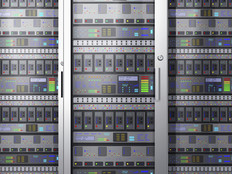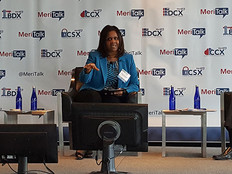Feds Are Embracing Software-Defined Data Centers for Flexibility, Cost Savings
The federal data center is becoming virtualized, and feds are enthusiastic about that shift, according to a Dell EMC survey.
The new survey is an extension of the Dell EMC “State of IT Trends Federal Study,” which was released in November 2016, and it found that federal IT leaders are far along in their adoption of software-defined data centers (SDDCs). The survey found that feds think SDDCs can increase agency flexibility, agility and efficiency.
Nearly two-thirds of survey respondents (64 percent) say their organization has deployed software-defined solutions, while 85 percent report progress adopting SDDCs. (SDDCs are data centers in which hardware components are virtualized, delivered as a service and managed by software.) Survey respondents say setting up SDDCs was a more important priority than other IT modernization efforts.
“The survey responses indicate that as agencies look to manage digital transformation and the vast quantities of data generated as a result, IT decision-makers see the advantages of transitioning to software-based environments,” Dell EMC said in a statement.
The Dell EMC-sponsored research was performed by market research firm Penn Schoen Berland, which conducted an online survey in May 2016 among 100 federal government IT decision-makers (ITDMs) and business decision-makers (BDMs). The survey was conducted as an extension of the State of IT Trends 2016 study, in which PSB conducted 1,200 online interviews between April 15 and May 4, 2016, in the U.S., UK, Germany, Japan, Brazil, India and China. The respondents consist of 700 ITDMs and 500 BDMs.
Seeing the Benefits of SDDCs
According to the survey, 56 percent of federal employees report being more than halfway done adopting an SDDC. Why such enthusiasm?
The survey found that 58 percent of respondents say agility and flexibility were important drivers of SDDC adoption, and 53 percent cite additional efficiencies. Additionally, respondents say simplifying management processes (41 percent) and reducing costs (38 percent) were also important considerations.
Steve Harris, vice president and general manager of Dell EMC Federal, says that agencies’ past success in adopting virtualization technologies and hyperconverged infrastructure has helped spur the adoption of SDDCs.
The federal government’s “cyber sprint” following the Office of Personnel Management breaches in 2015 helped spur SDDC adoption as agencies looked to increase cybersecurity, Harris says. Another was the Data Center Optimization Initiative, which requires agencies to house at least four virtual servers per each physical server. And yet another factor is the Federal Information Technology Acquisition Reform Act, which gave CIOs more authority to embrace technologies such as software-defined networking to increase the manageability of IT while decreasing costs.
“All of these technologies all have the benefit of a significantly decreased cost of acquisition vs. traditional three-tier architecture,” of separate computing, storage and networking hardware, Harris says. “As people bring shared service in, things like [virtual desktop infrastructure] or move to hybrid clouds, almost every one of these new implementations is built on software-defined architectures.”
Indeed, 90 percent of respondents say they want an IT architecture that allows them to tailor infrastructure to specific application and workload needs.
Agencies have been locked into legacy IT platforms, Harris acknowledges, including mainframe computers or proprietary Unix systems, and it’s difficult to shift away from them to more modern architectures.
Harris says agencies have the technical prowess to build software-defined environments, but face challenges in shifting workloads to SDDCs.
Additionally, agencies are also able to cut costs because SDDCs help agencies deploy IT infrastructure faster and realize benefits sooner. “These architectures are easier to build a solution around and more rapid to deploy,” Harris says. “And they’re actually easier and simpler to support.”
When adding in the factor that agencies can work with one vendor instead of three on an acquisition, “it makes it a very difficult proposition to resist,” Harris adds.
Security Remains a Top Concern with SDDCs
While feds say they are excited to reap the benefits of SDDCs, cybersecurity is a key concern for agencies considering them, followed by cost. According to the survey, 81 percent of federal employees say security is very important, while 61 percent say cost is a very important feature when evaluating SDDC solutions.
Harris says Dell EMC strives to “deliver on a very holistic vision for what a secure environment should entail.”
In SDDCs, instead of taking the traditional approach to network security and providing security for elements such as routers, switches, servers and storage, the virtualization of those components adds security, Harris argues.
The “attack surface” available for hackers “goes down significantly,” Harris says, “making it more efficient and straightforward to secure.”
SDDCs enable virtual desktop environments, which “creates a tremendous advantage in terms of securing” users’ endpoints, Harris says. Endpoints such as laptops and smartphones will always be the largest attack surface for malicious actors, he says.
Yet when an agency can pull workloads and data from devices into SDDCs, so that it is not residing on the endpoint, “you have made a quantum leap forward” in improving cybersecurity.









